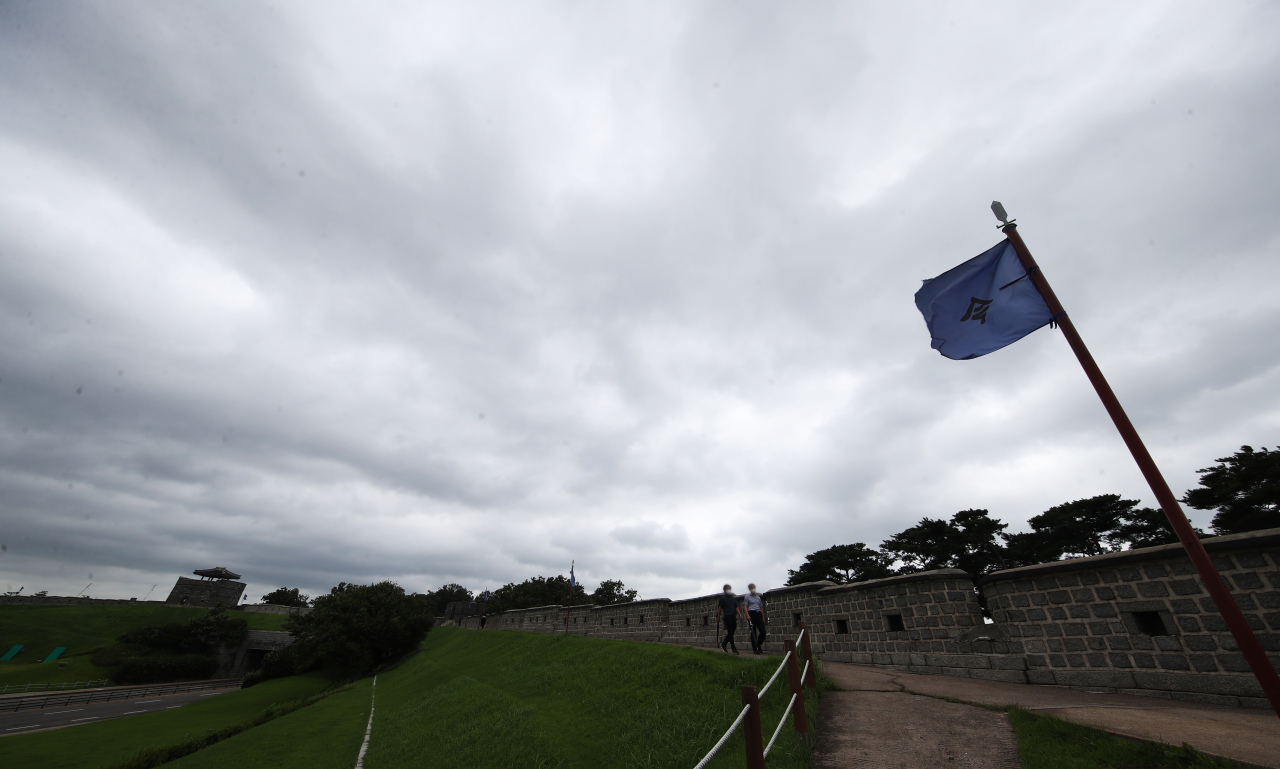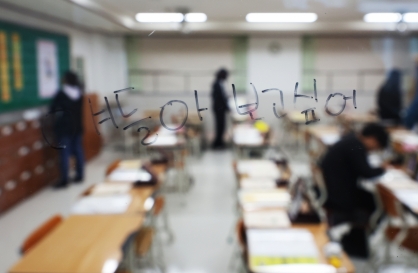Heat wave to return as typhoon passes without severe damage
Bavi, weaker than expected, passes S. Korea, no casualties reported
By Ko Jun-taePublished : Aug. 27, 2020 - 14:42

No casualties or major damages were reported from Typhoon Bavi, which cruised through Korea on Thursday.
Typhoon warnings and advisories were lifted for all parts of the country Thursday, and the Korea Meteorological Agency forecast a return of sweltering summer heat, once the storm clouds clear.
Typhoon Bavi, packing strong gusts of up to 45 meters per second, battered the southern island of Jeju on Wednesday and traveled northward through the Yellow Sea, affecting western parts of the country, including Seoul, from Wednesday night to Thursday morning.
The typhoon started to wane after making landfall in North Korea’s Hwaghae Province early Thursday morning and receded into a tropical suppression in mainland China at around 3 p.m.
Although not as severe as was warned, Korea still saw some property damage and power disruptions, especially in the southern regions.
According to the Central Disaster and Safety Countermeasure Headquarters, more than 1,600 households experienced power disruptions, with 887 of them on Jeju Island. A total of 101 property damage cases have been reported, with 41 of them concerning private properties.
Two million halibut died at a fish farm in Taean County, South Chungcheong Province, from a power outage disrupting the oxygen supply at the facility. Close to 30 people in Gokseong, South Jeolla Province, were evacuated to nearby facilities on landslide worries.
Flights and ferries were disrupted from operating due to strong winds and waves of the typhoon on its route. A total of 438 flight routes at 11 airports were canceled, and Incheon Airport suspended its airstrip for five hours until 7 a.m. Thursday.
Passenger ships were barred from moving on 99 maritime routes. Three sections of railways were suspended from usage, and 607 trekking routes at 21 national parks are still restricted from traffic.
The government has been on alert due to the expected seriousness of the typhoon, with the Ministry of the Interior and Safety hiking the alertness level to the second-highest level of “alert” on Wednesday.
As fears of what was once feared to be the largest typhoon in years have dissipated, authorities are monitoring the possibility of more typhoons developing and hitting the country in the coming weeks. The ninth typhoon of the year, which will be named Maysak, is expected to form in the far east of the Philippines, the KMA said.
The typhoon, if it forms, is forecast to reach Korea on Sept. 2 by entering via Busan and exiting through Yeongdeok, North Gyeongsang Province. Maysak could be stronger than Bavi and yield greater damage when it arrives, the weather agency warned.
By Ko Jun-tae (ko.juntae@heraldcorp.com)
Typhoon warnings and advisories were lifted for all parts of the country Thursday, and the Korea Meteorological Agency forecast a return of sweltering summer heat, once the storm clouds clear.
Typhoon Bavi, packing strong gusts of up to 45 meters per second, battered the southern island of Jeju on Wednesday and traveled northward through the Yellow Sea, affecting western parts of the country, including Seoul, from Wednesday night to Thursday morning.
The typhoon started to wane after making landfall in North Korea’s Hwaghae Province early Thursday morning and receded into a tropical suppression in mainland China at around 3 p.m.
Although not as severe as was warned, Korea still saw some property damage and power disruptions, especially in the southern regions.
According to the Central Disaster and Safety Countermeasure Headquarters, more than 1,600 households experienced power disruptions, with 887 of them on Jeju Island. A total of 101 property damage cases have been reported, with 41 of them concerning private properties.
Two million halibut died at a fish farm in Taean County, South Chungcheong Province, from a power outage disrupting the oxygen supply at the facility. Close to 30 people in Gokseong, South Jeolla Province, were evacuated to nearby facilities on landslide worries.
Flights and ferries were disrupted from operating due to strong winds and waves of the typhoon on its route. A total of 438 flight routes at 11 airports were canceled, and Incheon Airport suspended its airstrip for five hours until 7 a.m. Thursday.
Passenger ships were barred from moving on 99 maritime routes. Three sections of railways were suspended from usage, and 607 trekking routes at 21 national parks are still restricted from traffic.
The government has been on alert due to the expected seriousness of the typhoon, with the Ministry of the Interior and Safety hiking the alertness level to the second-highest level of “alert” on Wednesday.
As fears of what was once feared to be the largest typhoon in years have dissipated, authorities are monitoring the possibility of more typhoons developing and hitting the country in the coming weeks. The ninth typhoon of the year, which will be named Maysak, is expected to form in the far east of the Philippines, the KMA said.
The typhoon, if it forms, is forecast to reach Korea on Sept. 2 by entering via Busan and exiting through Yeongdeok, North Gyeongsang Province. Maysak could be stronger than Bavi and yield greater damage when it arrives, the weather agency warned.
By Ko Jun-tae (ko.juntae@heraldcorp.com)


















